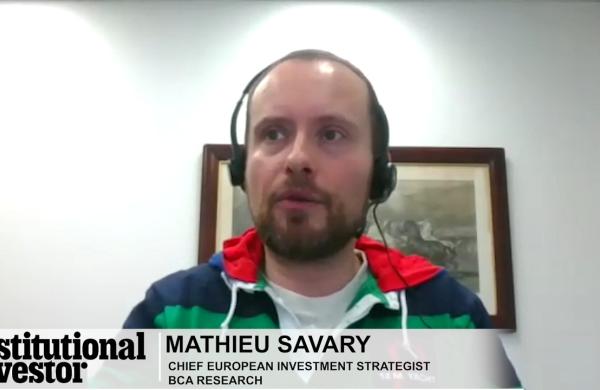The Allianz-Dresdner deal will form an asset management colossus, but it should also be the catalyst for an overdue restructuring of all German finance.
By Andrew Capon
May 2001
Institutional Investor Magazine
The Allianz-Dresdner deal will form an asset management colossus, but it should also be the catalyst for an overdue restructuring of all German finance.
When the "dream deal" of a merger between Deutsche Bank and Dresdner Bank fell through last spring, the chief matchmaker - giant insurer Allianz - had as much reason to be upset as the banks themselves. The combination of Germany's No. 1 and No. 3 banks would have represented the most sweeping restructuring of German finance since the war - and it would have given Allianz, which stood to gain key Deutsche retail banking offshoots, much broader business scope while plugging critical gaps in its product line. But at the time, Allianz's then-co-CFO, Paul Achleitner, 44, the ex-Goldman, Sachs & Co. banker who had largely engineered the deal, coolly told Institutional Investor (June 2000), "Everyone needs to calm down, reflect a bit and then - who knows?"
Who knew indeed? Allianz's recently unveiled plan to itself take over Dresdner to create the largest financial services conglomerate in Germany (and the fourth largest in the world) promises not only to remake German finance but also to reshape all of European financial services in ways that can only be imagined. All across Europe the CEOs of every bank, insurance company and fund manager are nervously speculating on what the creation of an asset-gathering powerhouse like Allianz-Dresdner in Europe's biggest economy will mean for their strategies. U.S. financial executives dare not ignore this development, either.
At home the deal puts intense pressure on Deutsche and No. 4 Commerzbank to seek out partners of their own so as to be able to compete on the same scale as their old rivals. "Of course there will be other transactions, because the competitive structure of the industry is changing," Achleitner, now sole Allianz CFO, told Institutional Investor. "Everyone has been waiting to see what Allianz would do. Now they know and will organize their own thinking accordingly."
Commerzbank, already menaced by corporate raider Cobra Holdings and considered easy prey for a big predator, looks even more vulnerable now. Italian insurer Assicurazioni Generali has upped its stake in Commerzbank to 10 percent as a defensive measure, and this could lead to closer ties between the two. Generali already sells some $1 billion a year of insurance through Commerzbank branches. And Generali and its allies - Mediobanca, Banca Intesa, Banca Commerciale Italiana and Banco Santander Central Hispano - control almost 17 percent of Commerz as it is.
Meanwhile, Deutsche, once determined to play the principal role in German banking consolidation, has been left pacing in the wings as Allianz-Dresdner assembles a formidable competitor. Even before that deal was announced on April 1, Deutsche had said that it was holding talks with French insurer Axa about a possible distribution alliance. Those talks have now taken on added urgency.
Axa has made no secret of its interest in Deutsche's insurance arm, Deutscher Herold, which would provide a big boost to Axa's life insurance business. The French insurer has long felt that its German distribution platform needed strengthening. But Deutsche chairman Rolf-Ernst Breuer has insisted that Deutscher Herold is not for sale, though he was willing enough to give it to Allianz as part of a Deutsche-Dresdner merger.
What might Axa offer Deutsche as a quid pro quo in distribution? Its insurance sales force is just beginning to sell investments. But Axa does have ready access to a slew of products - for instance, the mutual funds of its Alliance Capital Management affiliate in the U.S. - that could be sold through Deutsche branches. Moreover, the big insurer would be a powerful ally for Deutsche if the bank ever wanted to arrange a deal in France.
The Allianz-Dresdner deal does play, with surprising serendipity, into the hands of Albrecht Schmidt, CEO of Germany's No. 2 bank, HVB Group, still better known by its former name, HypoVereinsbank. In simple terms, it allows Hypo to forge closer ties with Munich Reinsurance Co. in an Allfinanz, or universal financial services, arrangement akin to that of Allianz and Dresdner yet still distinct.
Allianz-Dresdner will be a powerhouse - truly a company to reckon with, inside Germany and out. To be known as Allianz Dresdner Group, it will boast assets in excess of E1 trillion ($890 billion). More than one third of all German households and 190 of the 200 biggest German companies are currently customers of either Allianz or Dresdner or both. And with more than E109 billion in market capitalization, Allianz Dresdner will become Germany's largest listed company. Projected operating profits for 2001 are in the E3 billion range.
The creation of so formidable an Allfinanz enterprise in Europe's biggest market would have major ramifications in its own right. But under the convoluted German system of cross-shareholdings, the merger of Allianz and Dresdner will also set in motion the unwinding of equity ties among leading financial firms and begin the complex process of restructuring Finanzplatz Deutschland. As Allianz CEO Henning Schulte-Noelle, 58, who will head the new Allianz Dresdner Group, has pointed out, "By reducing their cross-shareholdings, Allianz and Munich Re are creating the preconditions for the necessary reorganization of the structures of the German financial services sector."
Most important, Allianz will effectively swap its stake in Hypo for Munich Re's stake in Dresdner. One upshot will be that Germany will emerge with two distinct and powerful financial services conglomerates: Allianz and Hypo.
Allianz executives stress that the insurer's impending E23.4 billion acquisition of the roughly 80 percent of Dresdner Bank that it doesn't already own is essentially a German solution to a peculiarly German set of problems. A conspicuous one is low return on retail financial activities, in part because of competition from state-subsidized savings institutions. But the deal appears to neatly solve several puzzles at once.
¥ In unbundling much of Allianz's mesh of cross-shareholdings, it frees up a good deal of capital (through a special-purpose financial vehicle) for purposes like acquisitions.
¥ It puts Dresdner's investment bank, Dresdner Kleinwort Wasserstein, on a more secure footing by offering its bankers the carrot of a partial public offering in a few years.
¥ Most critical of all, the deal considerably bolsters Allianz's credibility in asset management, an area in which the insurer was "underrepresented" in Germany, CEO Schulte-Noelle has conceded.
Allianz gains instant access to 1,414 Dresdner branches but also acquires Germany's fourth-largest asset management firm in Dresdner offshoot Deutscher Investment-Trust. In contrast to Allianz's mere 3 percent share of the German mutual fund market, DIT accounts for more than 13 percent. Dresdner also has a little-known gem of a private banking business.
The timing of the deal is propitious. Pension reforms mean that Germans will have to rely more on their own savings for retirement and so are becoming more inclined to buy stocks, especially in the form of mutual funds (notwithstanding recent net outflows reflecting tough market conditions). Dresdner's head of investment banking, Leonhard Fischer, 38, says that the desire of both Allianz and Dresdner to bolster asset management was the key driver of the deal. "Savings, provision for retirement and all the products that surround that - insurance, annuities, pensions and mutual funds - represent the biggest growth market in financial services in Germany for the foreseeable future," notes Fischer.
The opportunity is undeniably enormous. Germans' long-term savings assets are expected to grow from E1.5 trillion in 1999 to E2.7 trillion by the end of 2004. Mutual fund assets will more than double during the same period, estimates McKinsey & Co. The key to winning these assets: bank distribution, because 72 percent of German mutual funds are sold through banks.
Dresdner CEO Bernd Fahrholz, 53, who will serve as Schulte-Noelle's No. 2 in the new enterprise, has emphasized that "nothing will be split up here" and that the point of Allianz's and Dresdner's "bundling forces" is to lay the foundations for fresh business activities. "Our aim is to do two things," explains CFO Achleitner. "We want to capture the full economics on the production side by being able to offer asset management and insurance, and we want to capture the full economics of the revenue division between the producer and the distributor."
Huw van Steenis, a banking analyst at J.P. Morgan Chase Securities in London, grants that "bringing together a full suite of investment products with a full range of distribution channels is an appealing model." As German investors become more sophisticated, he says, they will want a range of investment products and "what we call Martini distribution - anytime, anyplace, anywhere."
Certainly, Allianz will have a battery of products to offer investors. It is Germany's preeminent insurer. DIT has an array of German and European equity and fixed-income products. Allianz's Pimco Advisors brings U.S. and global bond expertise to the mix. Dresdner's Nicholas Applegate Capital Management and Dresdner RCM Global Investors are growth-stock specialists, and Pimco's Oppenheimer Capital has a value tilt.
Allianz has wholeheartedly accepted the notion that success in Allfinanz depends on owning distribution outright - that is to say, acquiring a Dresdner. Although it started down the road of cooperative distribution agreements a decade ago (with Dresdner and Hypo, among others), Allianz reckons that times have changed. "It's fine to have an agreement with a bank to distribute insurance," says Achleitner. "But if you want to sell an asset management product, then you run into a problem because the bank is your competitor."
Allianz calculates that it sells twice as many insurance policies through Bavarian mutual banks as it currently does through Dresdner branches, because Allianz agents work directly in the mutuals' branches but not in the Dresdner ones. The insurer intends to retrain and provide incentives to Dresdner staff to sell insurance and investment products, thereby transforming clerks into an authentic sales force.
Allianz well appreciates the strong prima facie economic case for owning distribution: The distributor makes a turn on every product sold, and if a mutual fund happens to be one of its own, then Allianz also pockets the management fee - a double dip on revenue.
However, the notion that Germans will remain content to buy "house" investment products rather than shop around for the most alluring brands will be tested as they gain sophistication. So-called open architecture - selling products created by third parties through proprietary distribution channels - is the norm in markets such as the U.S. But Allianz doesn't see this as detracting from the value of owning distribution. If it sells a third-party product, the insurer still keeps the distribution fee, Achleitner notes. And he adds that Allianz has the power to demand reciprocity: It will open its distribution network only to those offering something tangible in return.
No one doubts that distribution clout is vital. But the question is whether Allianz could have achieved it without having to pay a premium. "There are ways to strengthen distribution that would not have involved using up so much excess capital," suggests Andrew Goodwin, an insurance analyst at Commerzbank Securities. "Alliances might work if given the chance, although admittedly there is no clear evidence. I just don't think Allianz would have done this deal if it hadn't already got the problem of what to do with a 21 percent stake in Dresdner."
Allianz did have ample incentive to plug holes in its distribution network as well as boost a lackluster return on equity. But as J.P. Morgan Chase's van Steenis points out: "Every bank and insurance company in Europe knows that asset gathering is the key to future growth and profitability. Allianz-Dresdner looks good in the abstract - the devil is in the execution."





